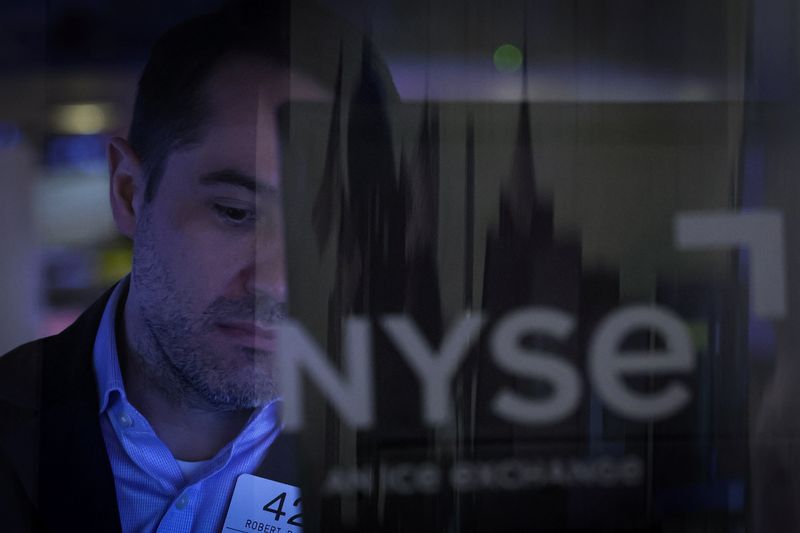By Noreen Burke
Investing.com -- The week ahead will bring the all-important U.S. monthly jobs report while equity markets embark on the second quarter, OPEC meets and central banks in Australia and New Zealand are to deliver their latest interest rate decisions.
- Nonfarm payrolls
Market watchers will be looking at Friday’s nonfarm payrolls report for a fresh update on the health of a labor market which has remained robust over the past year in the face of a barrage of rate hikes by the Federal Reserve.
Economists are expecting the U.S. economy to have added 238,000 jobs in March after an increase of 311,000 in February. Average hourly earnings are forecast to have increased at an annual rate of 4.3%, which would be the slowest rate since July 2021.
The March employment report will be the last before the Fed’s upcoming May meeting, with investors split over whether policymakers will raise rates one last time. An increase above 200,000 in terms of jobs creation is likely to bolster expectations for a 25-basis point rate hike.
Fed officials have indicated that they expect rates to remain around current levels for the rest of this year to help combat inflation.
- Other data, Fedspeak
Ahead of Friday’s all important March jobs report the economic calendar includes reports on February job openings on Tuesday and March data on private sector hiring on Wednesday.
ISM purchasing managers surveys of manufacturing and service sector activity are due out on Monday and Wednesday, respectively.
Several Fed policymakers are due to make appearances during the week, including Cleveland Fed President Loretta Mester, St. Louis Fed President James Bullard and Fed Governor Lisa Cook.
Fed officials have indicated that they expect rates to remain around current levels for the rest of this year to help bring inflation back down to the bank’s 2% target. But, while inflationary pressures remain elevated officials will also have to weigh the effect of higher interest rates on financial stability after the recent turmoil in the banking sector.
- Equity markets
U.S. equity markets posted solid gains in the first quarter despite a steep selloff in bank stocks after the collapse of two regional banks sparked fears over a broader financial crisis.
The Nasdaq gained 16.8% for its largest quarterly percentage increase since 2020. The S&P 500 rose 7%, rebounding after a nearly 20% drop in 2022 and the Dow Jones Industrial Average ended the quarter up 0.4%.
Wary investors say those gains leave stocks more vulnerable to an economic downturn, which may have been brought closer by tumult in the banking sector.
To what extent equities have factored in a possible recession - and whether the economy will experience one - has been a point of contention on Wall Street.
“The answer is emphatically no, the market is not priced for a recession at all,” said Hans Olsen, chief investment officer at Fiduciary Trust Co, which is guarding against future market turbulence by holding higher than typical amounts of cash. For stocks, “it means that we could be in for some very nasty surprises over the coming quarters.”
- OPEC meeting
OPEC+ is likely to stick to its existing deal to cut oil output at a meeting on Monday, Reuters reported, after oil prices recovered following a drop to 15-month lows.
Oil has recovered towards $80 a barrel for Brent crude after falling to near $70 on March 20, as fears ease about a global banking crisis and as a halt in exports from Iraq's Kurdistan region curbs supplies.
OPEC+, which comprises the Organization of the Petroleum Exporting Countries and allies led by Russia, is due to hold a virtual meeting of its ministerial monitoring panel, which includes Russia and Saudi Arabia, on Monday.
After those talks, the next full OPEC+ meeting is not until June.
Falling oil prices are a problem for most OPEC+ members because their economies rely heavily on oil revenue.
- RBA, RBNZ interest rate decisions
The Reserve Bank of Australia is to meet on Tuesday with a decision on whether to hike or hold rates on a knife edge.
Data last week showed that Australian inflation slowed to an eight month low of 6.8% year-over-year in February, prompting investors to pretty much rule out chances for a 25-basis point rate hike.
RBA Governor Philip Lowe has said the central bank was closer to pausing its rate increases because monetary policy was now in restrictive territory, and suggested a halt could come as soon as April depending on the data.
Meanwhile, markets are still betting on another 25-basis point rate hike from the Reserve Bank of New Zealand when it meets on Wednesday.
--Reuters contributed to this report
